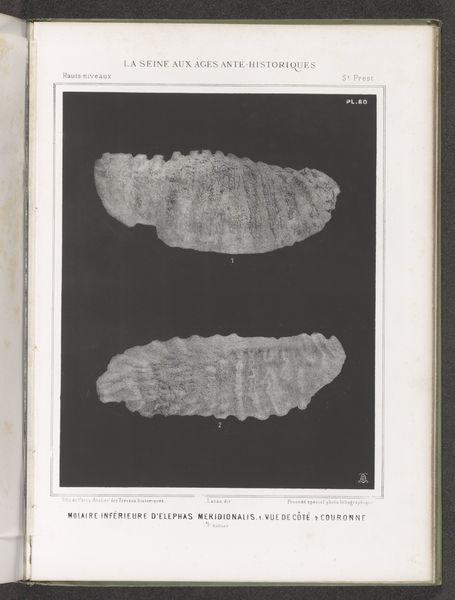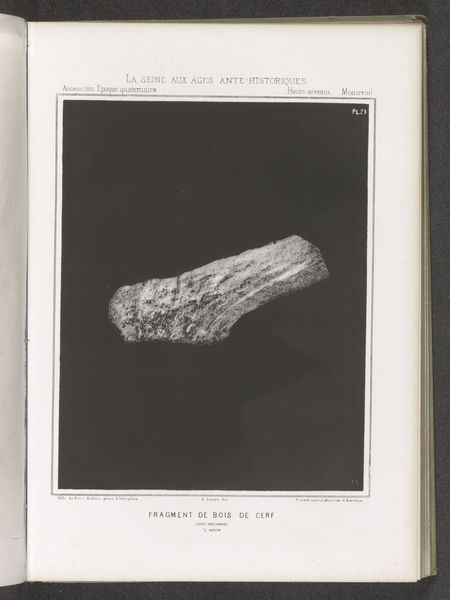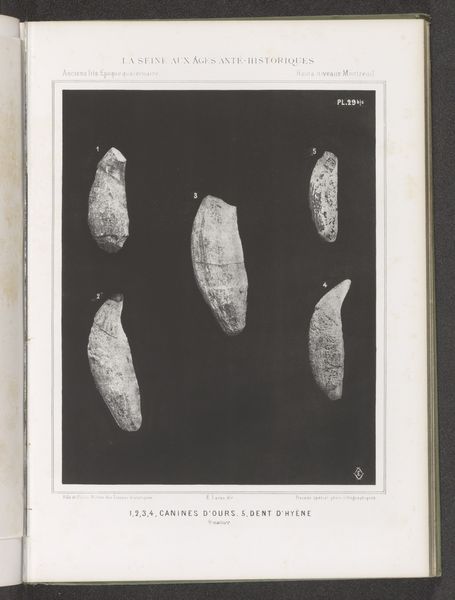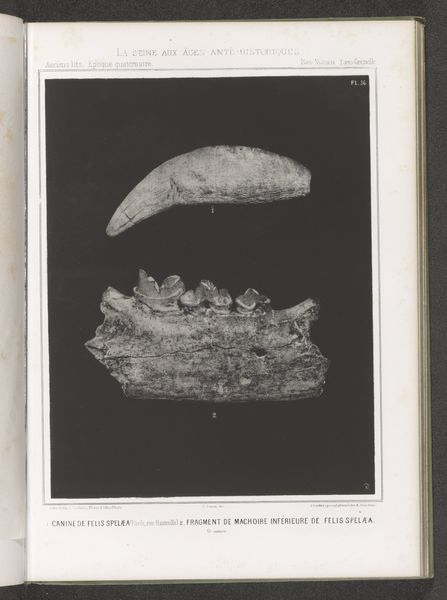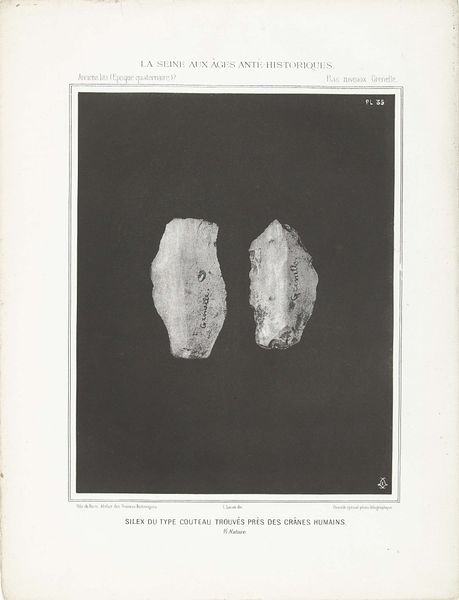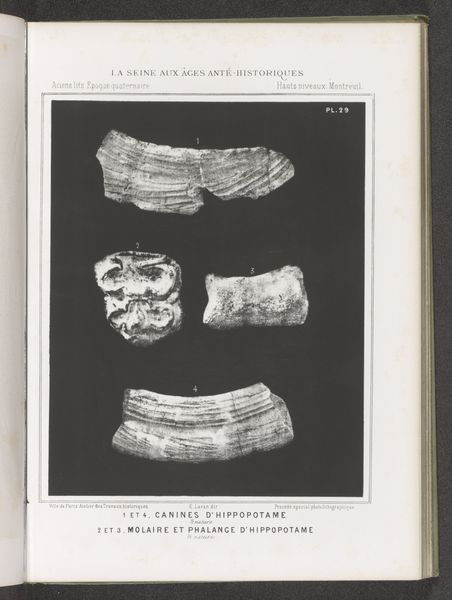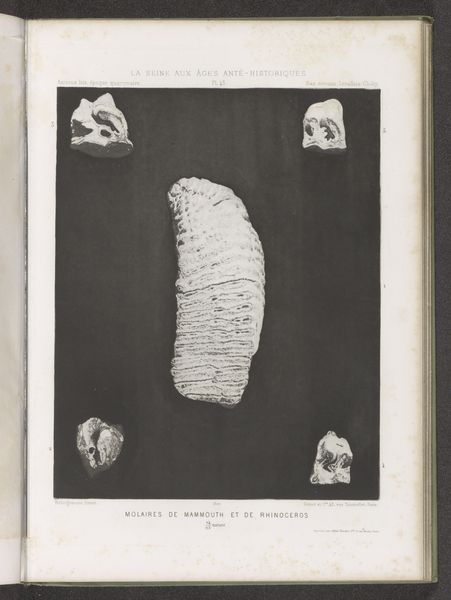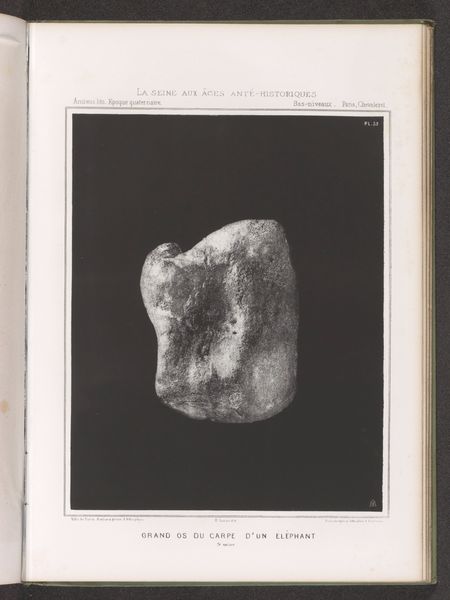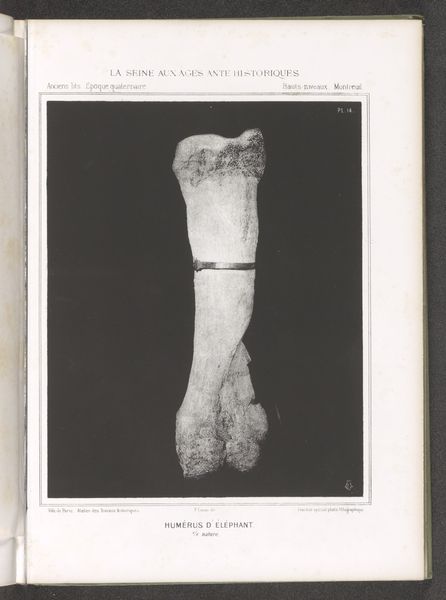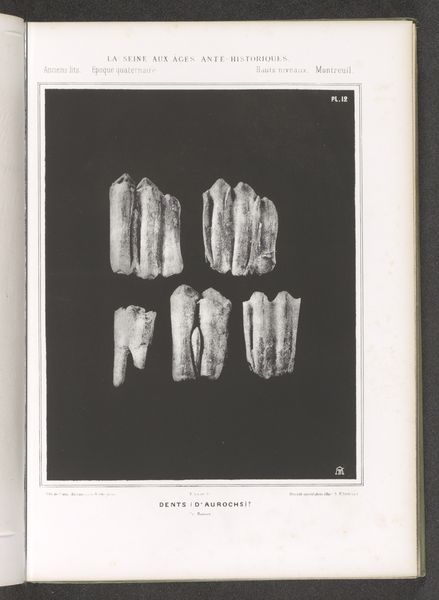
print, photography, engraving
# print
#
photography
#
ancient-mediterranean
#
history-painting
#
prehistoric
#
engraving
#
realism
Dimensions: height 240 mm, width 190 mm
Copyright: Rijks Museum: Open Domain
Curator: This image, titled "Vuurstenen bijlen" or "Flint Axes," is dated before 1869. It’s a print, a photographic engraving depicting prehistoric stone tools. Editor: They look incredibly basic. So rough hewn and utilitarian, yet this image documents them. How should we interpret this? Curator: From a materialist perspective, we should think about the labor embedded within those axes, and within the image itself. Flint axes represent a specific mode of production, reflecting the resourcefulness of early humans, and their immediate engagement with their environment. Consider the act of *making*. Editor: I see… It’s not just about what the axes *are* but also about the *doing*, the physical work that shaped them and subsequently this representation of them. Curator: Exactly. The act of engraving itself mimics the removal of material – from stone and from the printing plate. Think also about who commissioned and consumed this image. Were they archaeologists, antiquarians, or members of a burgeoning middle class fascinated by material evidence of the past? Editor: That's a good point. The consumption of this image reflects the collector’s interests and social status, documenting, classifying, and laying claim to our origins perhaps? Curator: Precisely! These axes weren't made to be pretty; they were made to *work*. Similarly, this engraving wasn't designed for aesthetic pleasure in the traditional sense, but to *show*, to instruct, and maybe even to impress. Editor: I’m starting to appreciate the layers here - it really expands beyond just a picture of some old tools. Curator: It highlights the intrinsic value of labor, of materials transformed by human agency, both then and now. Think of it as the raw material that makes civilisation itself! Editor: That makes you think about our modern tools of survival. It helps us appreciate art history, but also human evolution.
Comments
No comments
Be the first to comment and join the conversation on the ultimate creative platform.
